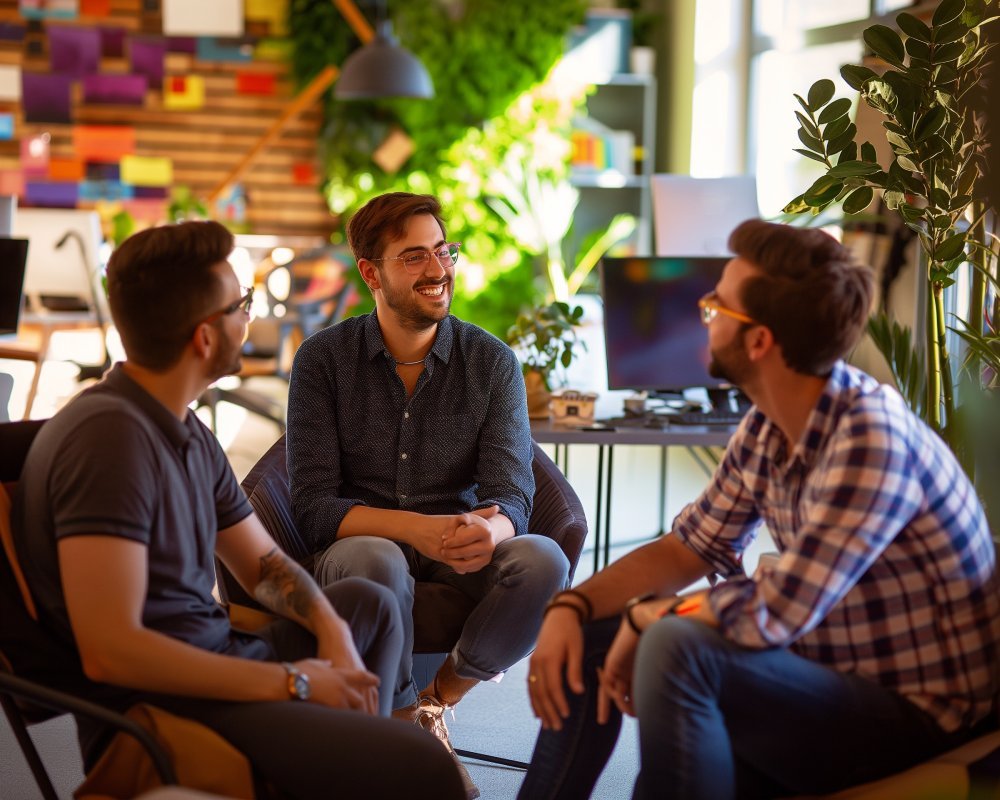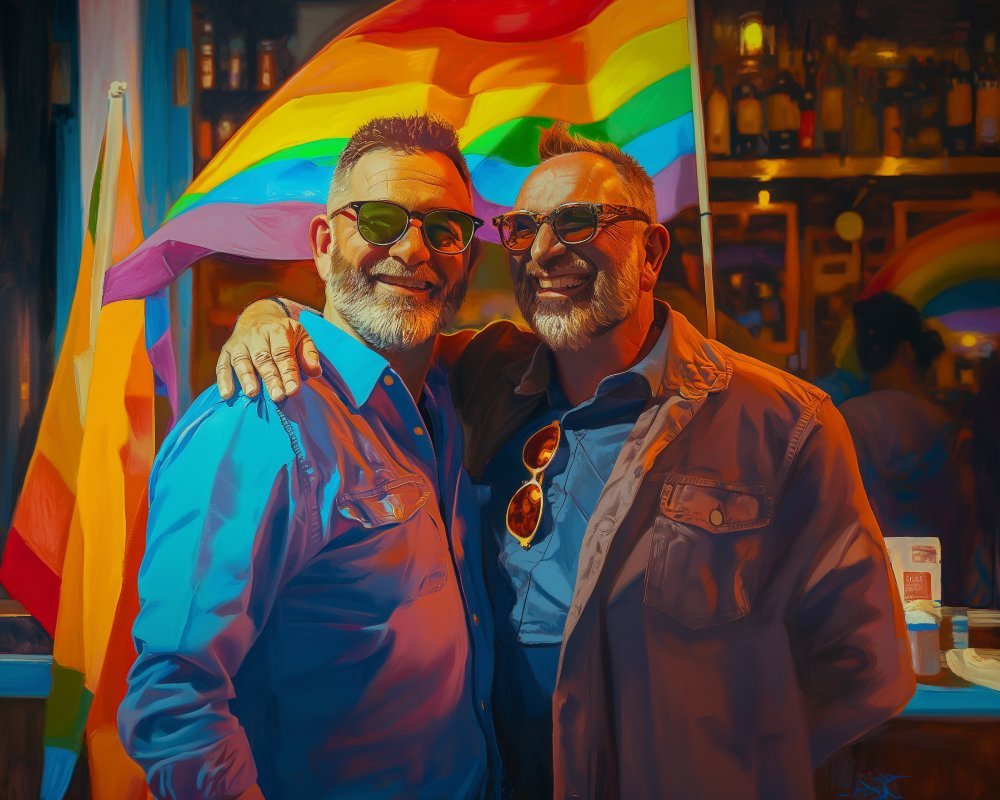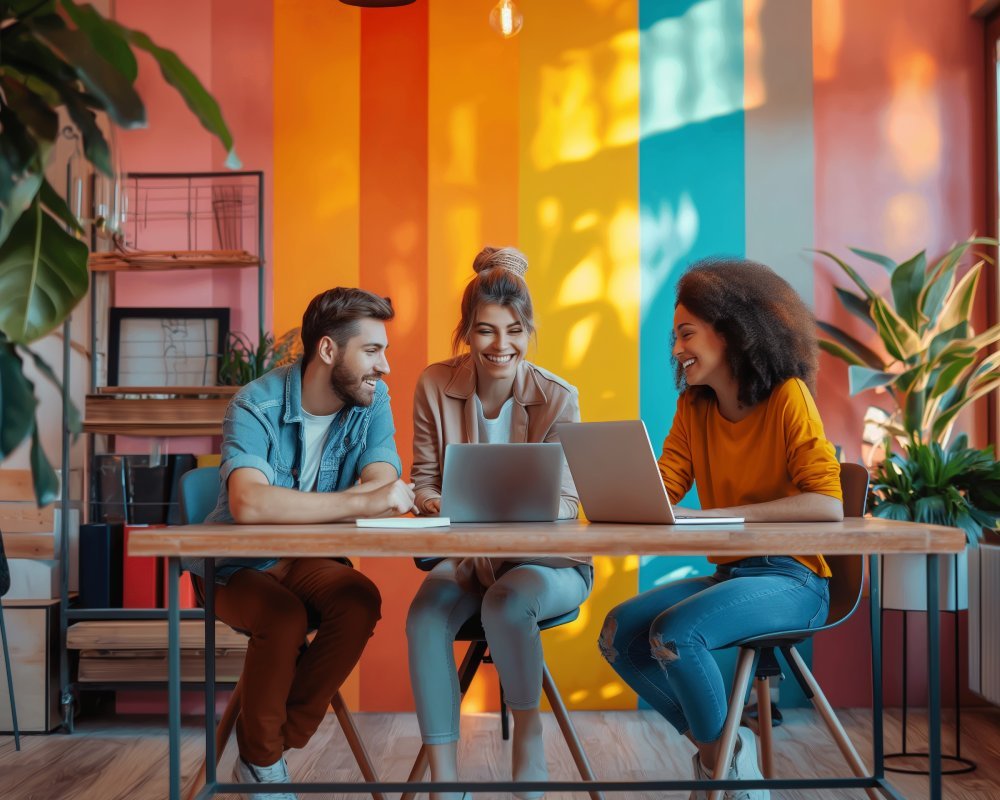
What Are the Most Common Gay Stereotypes? – The LGBTQ+ community is rich and diverse, representing a spectrum of identities and experiences. Yet, despite the vibrant tapestry it represents, the community is often subjected to a variety of stereotypes that simplify or misconstrue these rich narratives. Understanding the stereotypes faced by gay, lesbian, transgender, queer, and bi individuals is crucial for fostering empathy and awareness. This exploration into What Are the Most Common Gay Stereotypes? aims to shed light on these generalizations, demystify them, and inspire a more inclusive understanding of the LGBTQ+ community. Gay Thrive LGBTQ+ Marketing Agency, dedicated to bridging connections between businesses and the LGBTQ community, recognizes the importance of dismantling these stereotypes for authentic representation. Through debunking myths and promoting truth, we are better equipped to honor the diverse lives within this community. So, let’s delve into What Are the Most Common Gay Stereotypes?, exploring their origins and the impact they have today.
What Are the Most Common Gay Stereotypes?
In considering What Are the Most Common Gay Stereotypes?, one of the most prevalent is the assumption that all gay men are effeminate. This stereotype is rooted deeply in historical portrayals propagated by media and popular culture, which often depict gay men as possessing exaggerated feminine qualities. It’s important to understand that a person’s sexual orientation does not determine their mannerisms, personality, or interests. Gay men, just like those of any sexual orientation, express themselves across the full spectrum of masculinities and femininities. Such a multifaceted identity cannot be captured by a single stereotype. To combat this stereotype, understanding and empathy are paramount. By acknowledging such simplifications, we underscore the need to recognize each individual’s uniqueness, dismantling oversimplified narratives that fail to represent the actual diversity within the gay community.

The “Butch and Femme” Myth Among Lesbians
When exploring What Are the Most Common Gay Stereotypes about lesbians, the “butch and femme” dynamic stands out prominently. This stereotype portrays lesbian couples strictly as having one partner who is masculine in appearance and behavior (butch) and another who is feminine (femme). Such binary roles oversimplify the rich diversity existing within lesbian relationships and erase the multitude of ways individuals express gender and femininity. The reality is far more diverse, as lesbians, like any individuals, have their distinct personalities, styles, and preferences that do not always conform to these roles. Stereotyping in this binary manner reduces individuals to archetypes rather than honoring the authenticity of their experiences. Appreciating the spectrum of identities and expressions within lesbian communities enables a more inclusive understanding, moving beyond outdated notions.
Advertisement · Scroll to continue
Recommended
The Misconception Around Bisexuality
Considering What Are the Most Common Gay Stereotypes? regarding bisexuals, one persistent myth is that bisexual individuals are merely indecisive or promiscuous. This stereotype not only undermines the legitimacy of bisexuality as a valid sexual orientation but also ignores the fact that bisexual individuals can have committed and monogamous relationships, just like anyone else. Such misconceptions stem from a lack of understanding and awareness, and these oversimplified views often lead to bisexual individuals being marginalized or invalidated even within the LGBTQ+ community. Recognizing that bisexuality is a legitimate and stable orientation is crucial. To foster a more inclusive environment, it’s vital to support bisexual individuals in expressing their identities freely, without the constraint of stereotypes that diminish their experiences.

Transgender Stereotypes: Beyond the Binary
When exploring What Are the Most Common Gay Stereotypes that transgender individuals face, it’s essential to recognize stereotypes centered around the rigidly binary view of gender. Many people mistakenly believe that transgender individuals transition simply from one gender to another, but the reality is much more complex. Gender identity exists on a spectrum, and transitioning can take many forms, not necessarily adhering to traditional gender norms. Moreover, transgender people often face the misconception that their gender identity is merely a phase or an act of confusion. These stereotypes perpetuate misinformation, which can be damaging and invalidate the genuine and diverse experiences of transgender individuals. To better support and understand the transgender community, broadening our perspective on gender and respecting each individual’s journey is paramount in cultivating an inclusive society.
What Are the Most Common Gay Stereotypes? The Queer Experience
When pondering What Are the Most Common Gay Stereotypes? around queer individuals, one might incorrectly assume that queer is synonymous with confusion or non-commitment. However, “queer” is an identity that many adopt to express the fluidity and complexity of their sexuality or gender, resisting rigid classifications. The stereotype that queerness equates to ambiguity or non-commitment undermines the genuine self-identification and often comes from a lack of understanding. For many, identifying as queer is a conscious and powerful choice, providing a sense of community and belonging beyond traditional labels. Appreciating the unique expression of queerness means celebrating diversity and encouraging discussions that promote understanding and reduce stigma. By recognizing the authenticity and intention behind queer identities, we honor the diverse individuals who identify under this term.

Advertisement · Scroll to continue
Recommended
Challenging Stereotypes in Media Representation
The examination of What Are the Most Common Gay Stereotypes? must include an analysis of media representation. For decades, LGBTQ+ characters have been relegated to secondary roles, often portrayed through stereotypes that don’t reflect the complexity or diversity of real-life experiences. In film, television, and literature, gay characters have been typecast into roles that perpetuate existing stereotypes, such as the comedic gay sidekick or the “tragic” gay character. Such portrayals have a profound impact on public perception and can influence how LGBTQ+ individuals are treated and understood. To challenge these stereotypes, it’s crucial for media creators to encompass broader and more authentic narratives, which include a range of LGBTQ+ stories that go beyond simple archetypes. Encouraging diverse representation in media reflects a commitment to inclusivity, allowing audiences to understand and respect the full range of LGBTQ+ experiences.
The Role of Allies in Combating Stereotypes
In considering What Are the Most Common Gay Stereotypes? and the broader implications, allies play a significant role in challenging and dismantling these stereotypes. Allies can help combat stereotypes by actively educating themselves, speaking out against misinformation, and supporting the LGBTQ+ community. They can amplify LGBTQ+ voices, ensuring diverse stories and perspectives are shared and appreciated. Being an ally involves listening, learning, and taking actionable steps to promote inclusivity and equality. By advocating for LGBTQ+ rights and representation in society and media, allies help create a world where everyone can express themselves freely and authentically without being reduced to a stereotype. Supporting global and local LGBTQ+ initiatives, participating in activism, and broadening discussions about identity and expression further contribute to breaking down harmful stereotypes.

Tips for LGBTQ+ Marketers to Avoid Stereotypes
With the exploration of What Are the Most Common Gay Stereotypes?, it’s crucial for LGBTQ+ marketers to avoid and challenge such stereotypes in their campaigns. Key to this effort is authenticity—engaging genuinely with LGBTQ+ audiences by including diverse voices in the creative process. Understanding the audience involves intensive research, consultation with community members, and crafting messages that are both inclusive and representative. Marketing strategies should celebrate diversity by reflecting a range of LGBTQ+ experiences and ensuring advertising features multidimensional characters and stories rather than one-dimensional archetypes. Collaborating with LGBTQ+ influencers and activists can also be beneficial, ensuring campaigns resonate on a personal level. Importantly, brief advertising messages need to respect individual identities and acknowledge the intersectionality present within the LGBTQ+ community. With these approaches, marketers not only reach their audiences effectively but also foster real connections that transcend stereotypical portrayals.
Understanding Intersectionality
Integral to debunking stereotypes is the concept of intersectionality, which highlights how overlapping societal factors impact the experiences of LGBTQ+ individuals. Stereotypes can often overshadow the rich intersection of identities that include race, gender, socioeconomics, and disability. By acknowledging intersecting identities, we move beyond monolithic representations and appreciate the nuanced realities many face. Understanding intersectionality clarifies the limitations of stereotypes and underscores the need for broader, more comprehensive narratives.
Cultural and Regional Variations
Recognizing cultural and regional variations in stereotypes offers another layer of understanding when asking What Are the Most Common Gay Stereotypes? Depending on geographical, cultural, and societal norms, stereotypes vary widely. In some cultures, being LGBTQ+ is met with acceptance and celebration, while in others, it can lead to stigmatization. Acknowledging these differences helps foster a global dialogue about inclusivity, pushing against stereotypes that may arise from a lack of exposure to diverse perspectives.
The Importance of Language
Language plays a powerful role in either dismantling or perpetuating stereotypes. The words and expressions we use shape perceptions and can reinforce harmful stereotypes or promote understanding. Being mindful of language, including using correct pronouns and labels, signifies respect for individuals’ identities. Embracing inclusive language in everyday interactions and media further conveys support for the diversity present within the LGBTQ+ community, challenging common stereotypes by highlighting the individual stories behind each identity.
Educating Future Generations
Finally, educating future generations about What Are the Most Common Gay Stereotypes? and their harmful effects is a crucial step in building a more inclusive society. Schools, families, and community organizations hold the responsibility of teaching young individuals to value diversity and understand the negative impact stereotypes can have. Programs focusing on empathy, respect, and inclusivity help young people navigate a world filled with varying identities and experiences more positively. By prioritizing such education early, future generations are better equipped to challenge stereotypes, promote equality, and contribute to a community where every person is understood and celebrated for their true selves.
In conclusion, understanding What Are the Most Common Gay Stereotypes? allows us to approach the LGBTQ+ community with the respect and empathy it deserves. By dismantling these stereotypes, whether through marketing, media representation, or everyday interactions, we create a more inclusive world. Gay Thrive LGBTQ+ Marketing Agency remains dedicated to initiating these crucial conversations, fostering environments where LGBTQ+ individuals are recognized for their full humanity instead of being reduced to simplistic stereotypes. Let’s continue challenging these notions and work toward equality and acceptance for all.
Advertisement · Scroll to continue

More Recommended
Tips for Creating LGBTQ+ Inclusive Products and Services
Tips for Creating LGBTQ+ Inclusive Products and Services – Creating products and services that cater [...]
Mykonos Gay Travel Guide: Where to Stay & Party
Mykonos Gay Travel Guide: Where to Stay & Party – Welcome to Gay Thrive’s comprehensive [...]
Exploring the Challenges Faced by Gay Couples
Exploring the Challenges Faced by Gay Couples – Gay couples face unique challenges in their [...]
How Do You Plan a Perfect Gay Wedding?
How Do You Plan a Perfect Gay Wedding? – Planning a wedding is no small [...]
Benefits Of Marketing From Gay Owners To Gay Consumers
As a business owner in the LGBTQ+ community, you have a unique advantage when it [...]
The Role of Gay Athletes in Promoting Diversity
The Role of Gay Athletes in Promoting Diversity – The world of sports has long [...]
Why Do Gays Celebrate National Coming Out Day?
Why Do Gays Celebrate National Coming Out Day? – National Coming Out Day is an [...]
The Future of Advertising: How Companies are Embracing Lesbian Visibility
“The Future of Advertising: How Companies are Embracing Lesbian Visibility” The LGBTQ+ community has made [...]
The Power of Gay Voices in Literature
The Power of Gay Voices in Literature – Literature has always been a powerful medium [...]